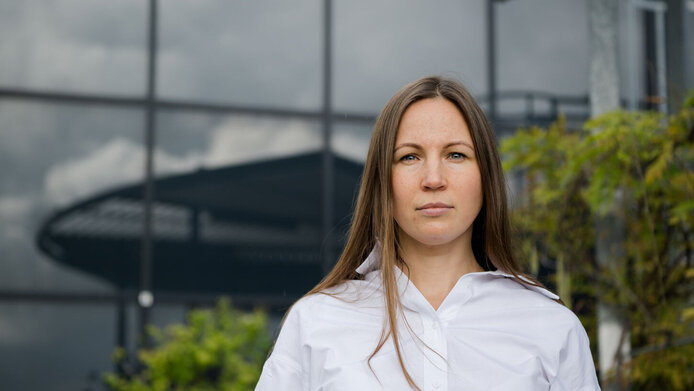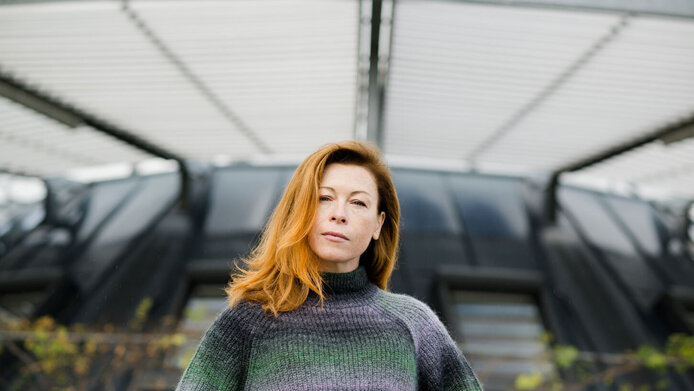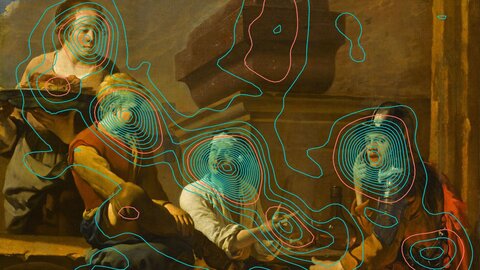Refugee researchers
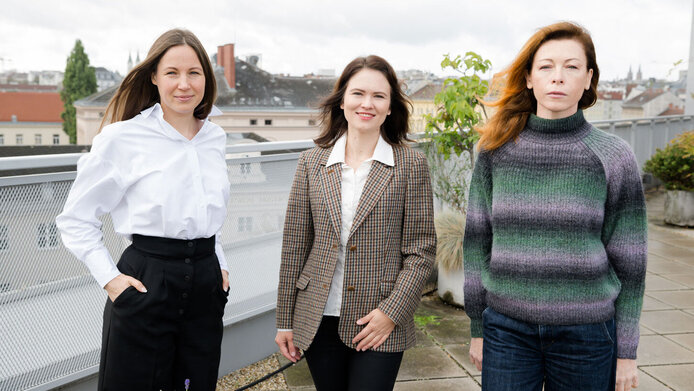
Russia's attack on Ukraine in spring 2022 triggered a wave of refugees. Millions of Ukrainians left their homes, mainly in the direction of the West. For some of them, states such as Poland or Austria were only a stopover before moving on, others stayed. Among these refuges were numerous researchers. In order to assist them, the FWF launched a new addition to its programme: principal investigators of ongoing FWF projects were able to submit an application to involve refugees or Ukrainians who had been in Austria for no more than two years in a project for the duration of 12 months. The following three cases show how smoothly the expertise of these researchers can be integrated into a project.
Teaching about the lungs
Machines are superior to human beings in many ways. There is one area, however, where they are still far behind: they are lacking in adaptive skills. While humans have no problem in telling a bush in the shape of an elephant from a real elephant, computers can be hard put to do that.
This is one reason why, although machines are widely used in medicine, making a diagnosis is still left to doctors. Diseases are complex, as the radiologist Svitlana Pochepnia knows very well. “A disease doesn't always look the same on an X-ray or an MRI scan,” she notes. “There are clues, but it often takes one or even several experienced pairs of eyes to make a diagnosis.”
Machine learning is one way to improve the analytical ability of computers. A simple example: human doctors feed software with thousands of photos of moles, which they have previously assessed as “suspicious” or “harmless”. With each photo, the software learns a little bit more about what a mole looks like that needs to be examined more closely. “We are, in a way, teachers for the computer,” says Pochepnia. “The idea is that machines should handle the simple and unambiguous cases so as to leave doctors more time for the complicated ones.” Time, in general, is a factor, since early diagnosis improves the prognosis in many cases.
In Kiev, Pochepnia worked as a radiologist in a private clinic. There, the lung was not her specialism – well, not initially. “The past three years have made all radiologists experts in lung diseases,” she says. They simply had to treat a lot of Covid 19 patients. Since her flight in spring, Pochepnia has been part of the project “Detection of Newly Emerging Infectious Lung Diseases” by the CIR Lab at Medical University of Vienna. Very roughly speaking, this is about the automatic detection of infectious lung diseases using machine learning. Pochepnia works in the medical section. In other words, she screens up to 200 genuine lung X-ray images every day and classifies them by disease. “In complicated cases, I collaborate with the project management so that the decision is made with four eyes.” In many, many steps, the programme then “learns” how – or by what markers, as one would say in technical jargon – individual infectious lung diseases can be identified. After this training process, such programmes are expected also to be able to find previously unknown markers and patterns and to draw the attention of physicians to newly emerging phenotypes or even completely new lung diseases. “Then the computer will be able to teach us something,” Pochepnia says with a smile.
Dizziness – outcome unknown
“In professional terms, this is actually a dream for me,” says Julia Strikovska, who considers the chance to be able to deal with a topic artistically and theoretically without being forced to produce results and publications as a great opportunity. “Even if the reason for my being here in Vienna is not a nice one.”
Strikovska hails from Kiev. She is lawyer by training and in Ukraine has worked especially in the field of business law. In addition, she has been an artist for over a decade. At first glance, the combination seems odd, but for Strikovska it makes sense. “The law is a way to regulate and codify social relations,” she says. “Ultimately, art is also a way to communicate with one another in a social fabric.”
Since early May, Strikovska has been involved in the project “Navigating Dizziness Together” at the University of Applied Arts in Vienna, which is the follow-up project to “Dizziness - A Resource”. This project series is about dizziness as a phenomenon: as both a resource for artistic creation and as an influence on people in everyday life. “It’s a very broad-ranging approach,” Strikovska notes. “It starts with a physical state - i.e. teetering, tumbling bodies - but also explores the phenomenon in a social and political context.” In other words: a holistic view of vertigo.
The project is part of the “Art and Research” department of the University of Applied Arts. Hence, it is not a project that aims at producing applied art, but a research project. Art-based research is quite different from research in other disciplines. There is more freedom, less rigidity. The classical research process that involves “generating hypotheses, testing them empirically and, perhaps, falsifying them” is not applicable here. Instead, the researchers develop inter- and transdisciplinary theoretical frameworks, interpret concepts from unusual perspectives and seek ways to use the resulting irritations in a productive way. Specialists from a wide range of fields collaborate and contribute their perspectives. “In my case, I try to bring together the fields of art, economics and law,” says Strikovska. While this is not easy, the project is open to all manner of outcomes. “That's the great thing about it: I don’t yet know what the result will be either.”
Algae in the Danube floodplains
“My area of expertise is algae, their taxonomy, their ecology, their habitats,” says the hydrobiologist Olena Bilous. From a lay perspective, her field of research may seem unspectacular. But actually, virtually everything starts with algae, at least in water. “Algae are the basis for ecosystems,” says Bilous. They engage in photosynthesis and thus constitute the beginning of the food chain.
The project “eDNA Analysis of Vertebrate Metacommunities in Riverine Floodplains” (RIMECO) at the University of Natural Resources and Applied Life Sciences Vienna (BOKU), on which Bilous is working, is based on the concept of metacommunities and their dynamics. Local communities of living organisms in one habitat are in an exchange with communities in other habitats. Therefore it is not enough just to look at how a community reacts to changes in local environmental conditions, but the connectivity between habitats has an impact on the spreading of species. Including algae in this view enables researchers to study changes in environmental conditions as well as changes in the interaction between groups of organisms. With the time factor, the project at the Institute of Hydrobiology and Acquatic Ecosystem Management (IHG) adds another component: how will the metacommunity and its environment develop over time?
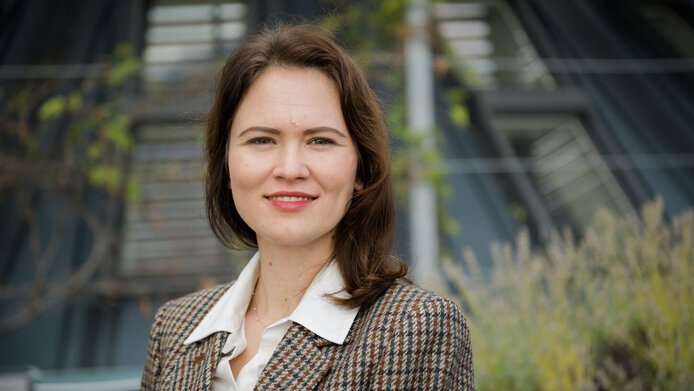
“It is exciting, because I have never worked in a national park before,” says Bilous. The project also includes field work, and the researchers regularly explore the Danube Floodplains National Park by boat or on foot and take samples that are later analysed in the laboratory. Olena Bilous is no stranger to this kind of work: in Kiev, the hydrobiologist’s research focused on rivers and she was often out in the field.
Algae are a big collective group of organisms including more than 45,000 species. They do not constitute a single kinship group of related taxonomy, but a group of living beings sharing a similar way of life. “Traditionally, ‘cyanobacteria’, for example, are also considered to be algae,” says Bilous. Cynanobacteria are prokaryotic (i.e. lacking a well-defined cell nucleus) organisms known to colonise habitats with extreme environmental conditions.
The RIMECO BOKU project actually focuses on fish and amphibians. But it does make sense, of course, to look at the matter holistically and include algae. “Algae are not only a food resource for vertebrates,” says Bilous. They are also good indicators and markers: the presence of certain algae can give scientists an indication of water quality and other properties of the ecosystem under study. “I hope my expertise will help the project.”
Plans for an uncertain future
What will life bring after the 12 months in the FWF project? All three researchers agree that, for the time being, there is no going back to a country in which a war is raging. “I want to stay here until peace has returned to the entire country, including Crimea and the other occupied provinces,” Bilous says. The researchers would like to build on the collaboration projects with the research groups form Vienna and continue to contribute their expertise to Austrian research. In order to be able to establish herself professionally in exile, Svitlana Pochebnis is currently trying to be recognised as a physician in addition to her research work. This will require improving her German, she says with a smile. She is confident, although the team communicates more or less in English only. A German teacher from Ukraine assists her in her language learning efforts.
Crisis support for Ukrainian researchers
